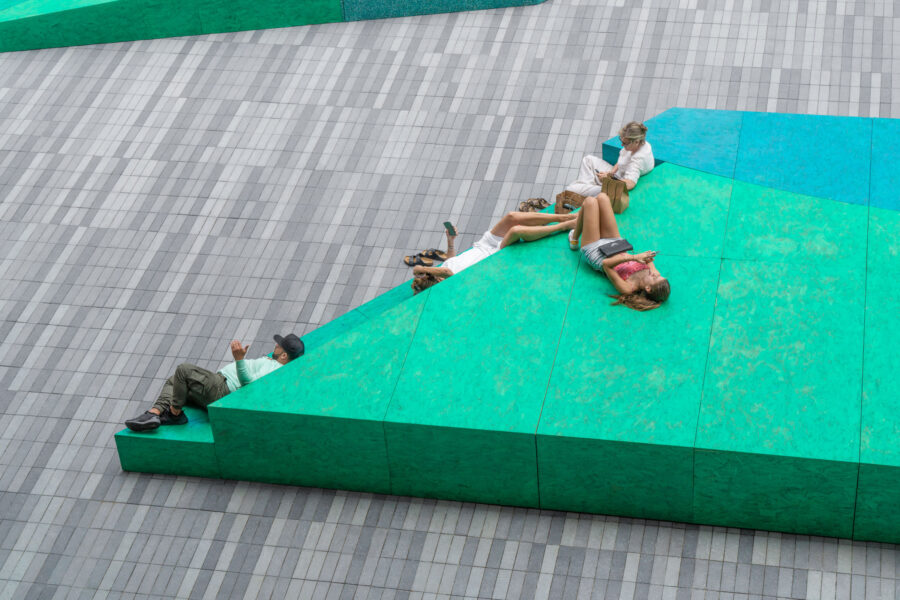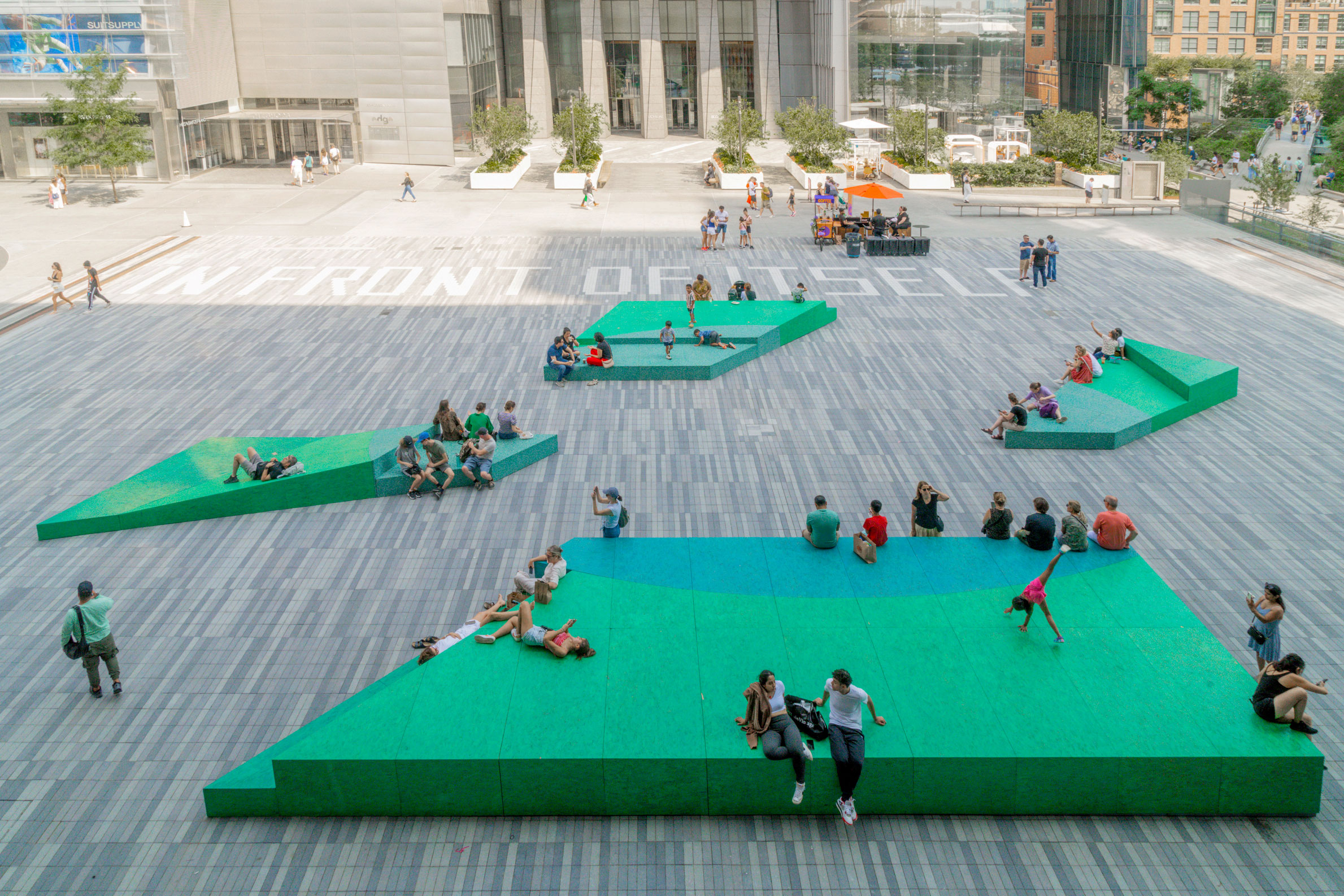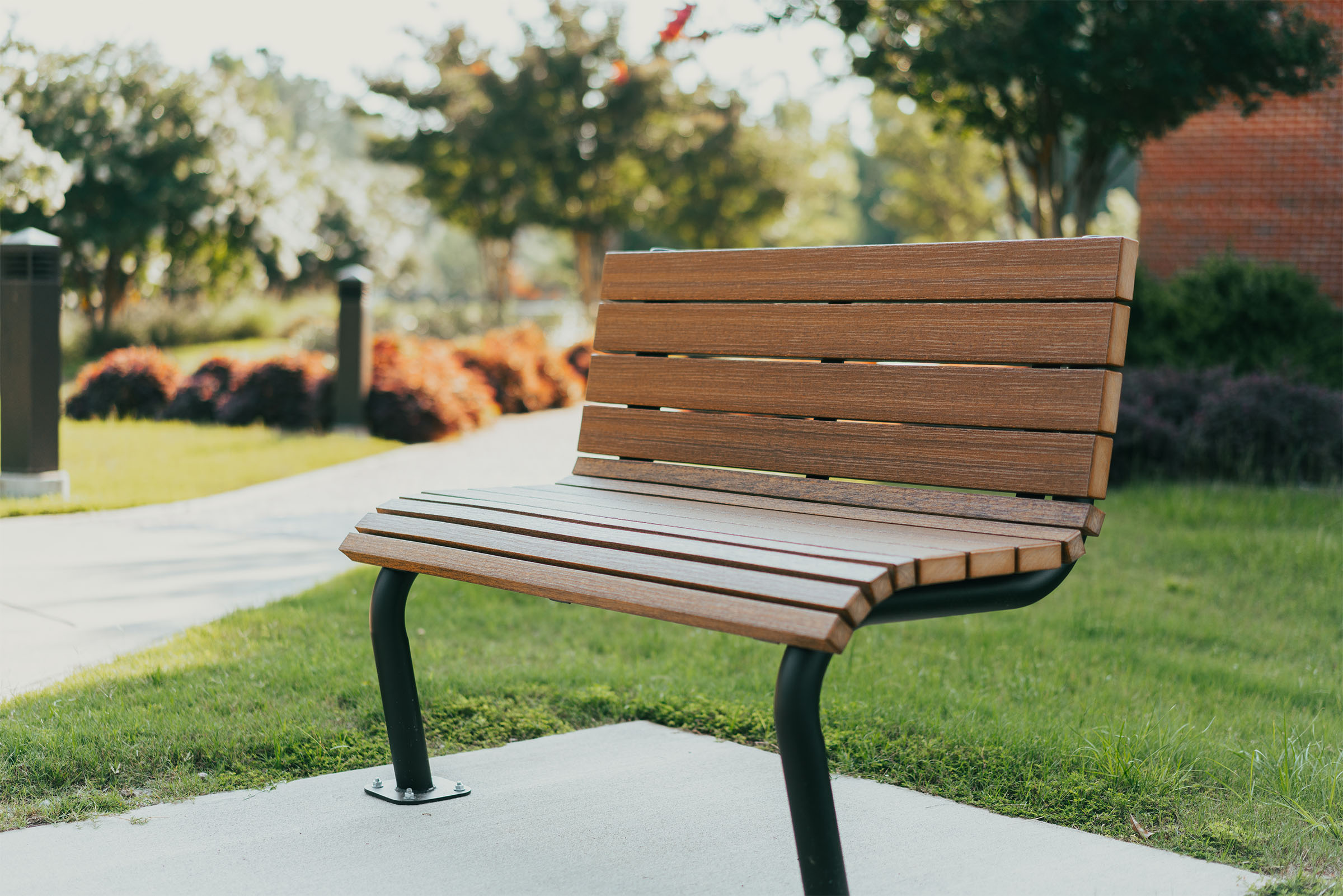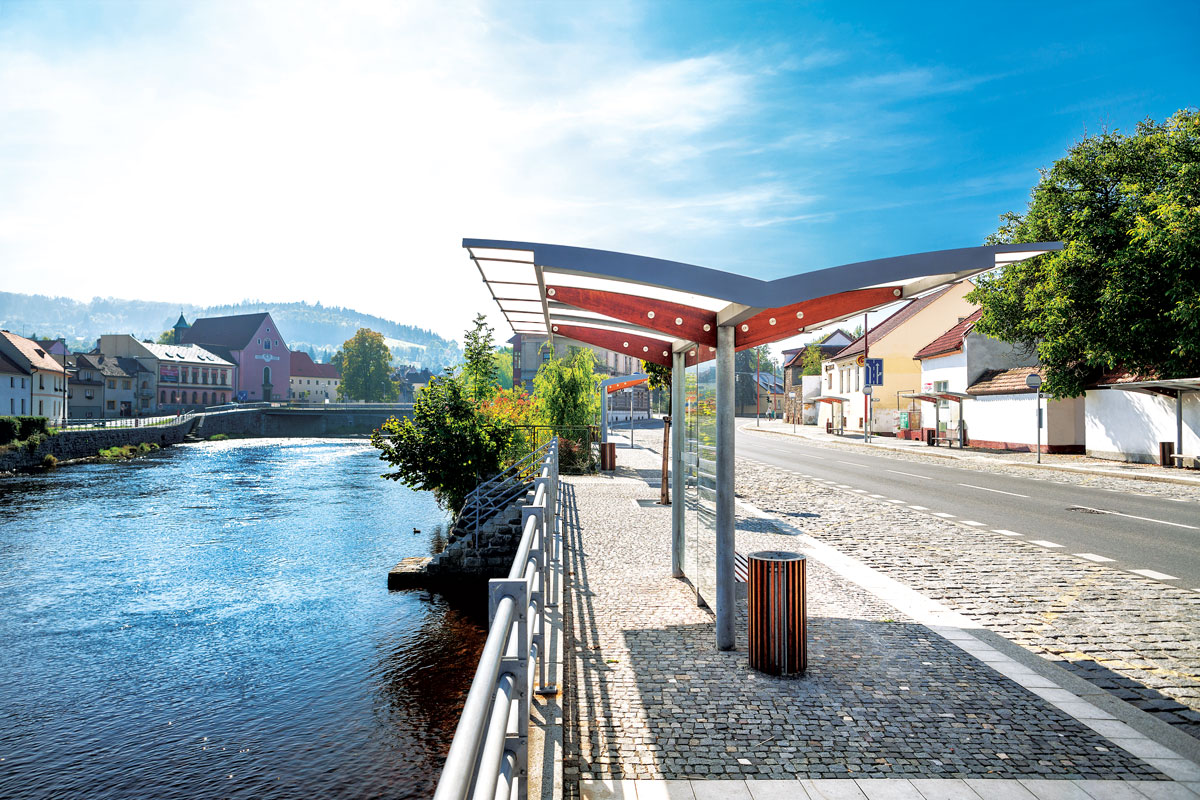Story at a glance:
- Attendees loved interacting with the Tidal Shift installation as part of the public “Summer Sway” series of programmed dance and music events hosted by The Shed in New York City.
- After installation there was a noticeable shift in the patterns of movement through the plaza and an uptick in the diversity and range of spontaneous modes of social interaction
Outdoor urban spaces within the public realm can often land at opposing ends of the spectrum in terms of the experiences they provide—feeling either boisterous, large-scale, and overwhelming or empty, under-stimulating, and generic. Whether due to over-standardized design guidelines or a lack of emphasis on diversifying social use at the human scale, public spaces like plazas or streetscapes are not always as welcoming or engaging as they could be.
Tidal Shift demonstrates an approach to design in the public realm using a different lens. This site-specific installation was developed for The Shed, a nonprofit institution for art and culture in New York City, and was designed to activate their public plaza for summertime programming. The design proposal was developed by the WIP Collaborative, a shared practice and platform that enables independent design professionals and their respective practices to combine their varied expertise and perspectives to realize broader impact through collaboration and non-hierarchical modes of working.
What is Tidal Shift?

Tidal Shift is a site-specific installation in Manhattan. Photo by Michael Vahrenwald
Tidal Shift aimed to introduce sculptural forms and vibrant materials to the site that respond to the angular geometry of The Shed while offering a striking contrast to the monumental towers and wide open public spaces of Hudson Yards. Alternatively, the installation aimed to support and emphasize the scale of human bodies—both individually and in congregation—through inclined planes and stepped surfaces that invite play, rest, and social connection.
Conceived as a family of interrelated shapes, the platforms were configured in formal dialogue with one another, each developed to accommodate sitting, lounging, performing, and gathering, not only through their respective forms as separate objects but also via their composition together with the negative spaces in between them. This configuration was intended to be both dispersed and coherent as a collective zone of gathering, with the platforms oriented to support a sense of togetherness while also remaining open and connected to the surrounding plaza and pedestrian areas. The scale of the platform elements was uniquely determined to mediate the open plaza’s expansive space with a more approachable scale of communal furniture.
Symbolically the blue-green colors and undulating forms celebrate movement and action. They were also expressions of solidarity with the “green wave” of feminist activism that gained global momentum with recent hard-fought victories for women’s health care rights in Latin America at the time of the project’s opening in summer 2022. Through its forms, colors, and responses to context, the project called for a tidal shift in the liberation and care for diverse embodied experiences.
On a more local, site-specific level, the installation’s material palette and textures incorporated an additional layer of vibrancy, warmth, and soft tactility to complement the sleeker and more monochromatic backdrop around it.
After installation there was a noticeable shift in the patterns of movement through the plaza as well as an uptick in the diversity and range of spontaneous modes of social interaction—whether through everyday gathering and relaxing or communal assembly and group interaction for specific music performances, dance parties, and other events hosted by The Shed. From cartwheels and synchronized dance ensembles to lunchtime meetings and naps in the sun, the variety of social activities displayed and the personalization of use reflected the expressive character of civic life that emerges when people are given the possibility of more choice and engagement in public spaces.
Important Questions
The Tidal Shift project allowed us to test and explore a number of recurring questions from my independent practice, Kalos Eidos, as well as work in architecture more broadly. How can qualities of interiority and urbanism hybridize to yield a sense of belonging and coherence while allowing a wide range of activities to co-exist? How can form and materiality be calibrated to prompt a range of possibilities for social engagement without being overly prescriptive, staying multi-faceted and open to interpretation? How can spaces be radically transformed through an economy of means, synthesizing inputs from the material and spatial to the programmatic and cultural?
As a designer working across an array of project types and contexts that often span across human, architectural, and urban scales, it’s been important to understand project sites as dynamic, multi-scalar, and materially layered environments. Whether designing a building interior or a public plaza in a domestic or civic domain, the framework for shaping a project’s identity always entails a mix of space, surfaces, objects, textures, colors, and other dynamic forces acting together to support various modes of interaction and experience. In combining, overlaying, and developing them with enough coherence to be meaningful, each of these facets of an environment can contribute as critical ingredients for crafting and cultivating the identity and performative capacity of design interventions. When that balance of components also allows openness to and anticipation of the unplanned nature of social interaction and use, it activates the potential for design outcomes to invite, surprise, welcome, and embrace adaptability.



